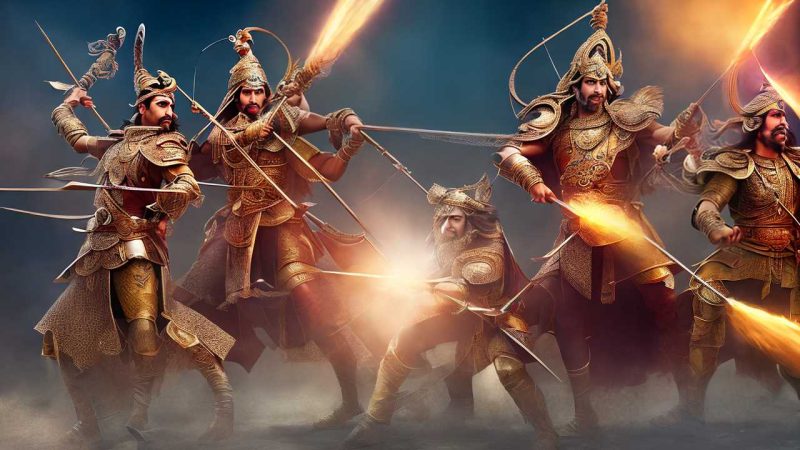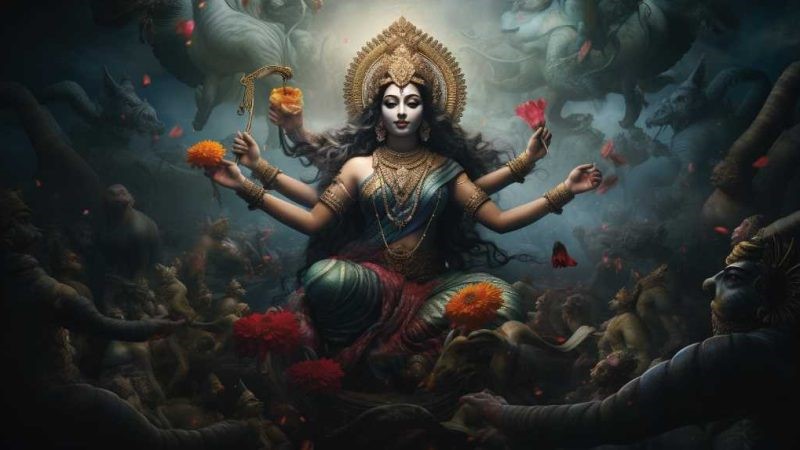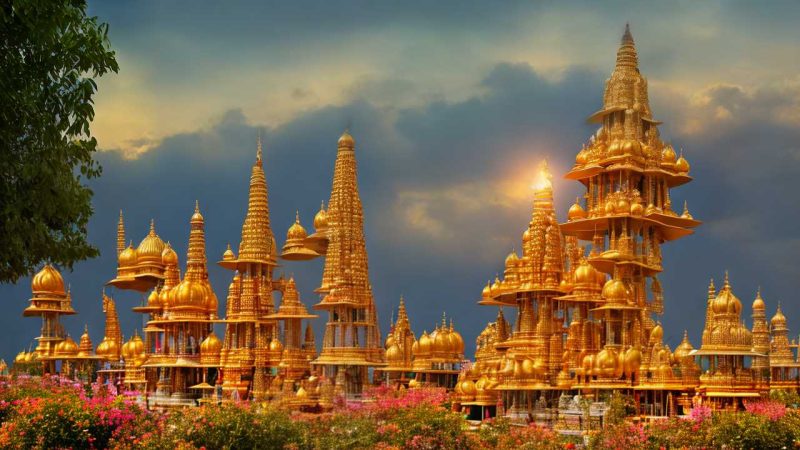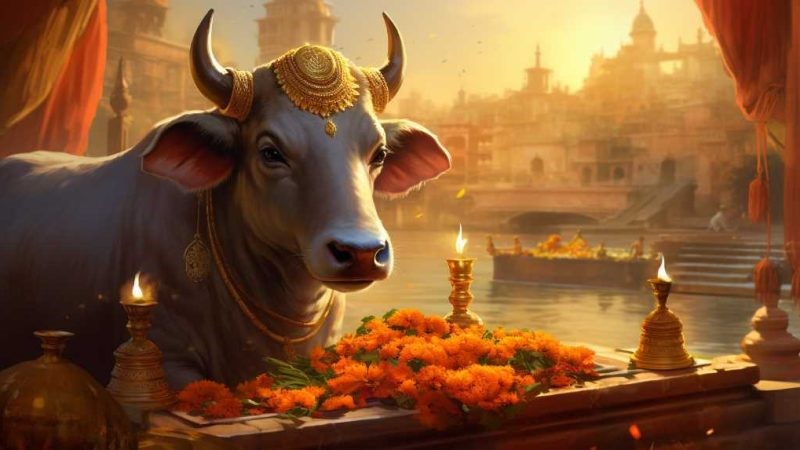The Quest for Serenity Hindu Symbols for Peace

Throughout human history, people have always looked for peace. They often find comfort in special cultural symbols and rituals. Hinduism has many such symbols that mean a lot more than what they show. For example, the sound ‘Om’ is known all over the world and helps many find peace. Another symbol, the ‘Swastika’, is not as well-known globally but is just as important for peace in Hindu culture.
Let’s talk about a few of these symbols. The lotus flower is one of them. It stands for staying pure even when things are tough. The trishula, which is a three-pronged spear, stands for control over one’s own spiritual and mental well-being. When we look closely at what these symbols represent, we can see how they help people feel calm and find inner peace.
However, these symbols are not just about looking peaceful. They connect to a long history and deep spiritual ideas. It’s important for anyone searching for inner peace to understand these deeper meanings. So, when you see these symbols or use them in your life, remember they’re not just simple images. They’re reminders of how to find peace within yourself and are part of a much larger tradition.
Unveiling the Om Symbol
The Om symbol holds a special place in Hindu beliefs, where it’s seen as a sign of the entire universe. It’s the most important chant in Hinduism and is said to be the original sound from which all other sounds come from, capturing what the universe is all about. When people say Om out loud, it’s like they’re connecting with the basic truth of everything that exists, going beyond just words. You’ll find this symbol everywhere in Hinduism – in holy writings, during religious ceremonies, and when people meditate. It shows how everything in life is connected.
When you look closely at the Om symbol, it has different meanings that include moral ideas, deep truths, and a message of living together in peace. Om isn’t just a sign; it’s a way to lift yourself up spiritually and to remember that peace is something very deep and special.
For example, when people meditate and chant Om, they often feel more relaxed and focused. It’s like using a tool that helps you find calmness in your busy life. If you’re interested in trying this out, you might want to look into meditation apps or classes that focus on chanting Om, which can guide you through the process and help you understand its significance better.
In short, Om is a powerful symbol that helps people find a deeper meaning and connection in their spiritual practices, reminding us all of the importance of peace and unity.
The Lotus: Purity Embodied
The Lotus flower is important in Hindu beliefs because it stands for purity and the growth of a person’s spirit. Like the sound of Om is important for everything in the universe, the Lotus shows how people can grow from difficult situations and find wisdom and inner peace. This flower grows in dirty water but still looks clean and beautiful, which is a strong picture of how people can overcome challenges.
In pictures of Hindu gods, they are often shown sitting on a lotus, which tells us that they are pure and connected to the divine.
The Lotus reminds us that even when life is tough, we can reach a higher spiritual level without being affected by the problems around us. In simple terms, the Lotus means that good things can come from bad situations if we stay true to ourselves. This is why the Lotus is not just a flower; it is a symbol that teaches us about strength and moving beyond life’s hardships.
The Swastika’s Peaceful Origins
The Swastika is an old symbol that’s been around for thousands of years. It’s a sign that has meant peace, luck, and wealth in Hinduism and some other Asian beliefs. You can see the Swastika in Hindu holy texts and art because it means a lot more than just its simple shape. It looks like a cross with four arms that are the same length and each one is bent at a 90-degree angle. People think that the Swastika shows how the universe’s spirit never ends.
When the Swastika turns to the right, it stands for good things, and when it turns to the left, it stands for challenges. But both are part of life, and they fit together well. This sign is a big part of Eastern spiritual traditions. It’s all about trying to find balance and living together peacefully in the world.
In a simple way, the Swastika reminds us that even though life has ups and downs, we can aim for balance. It’s important to understand this because it helps us see why the symbol is so special in the East. It’s not just a sign; it’s a guide for how to live in harmony with everything around us.
Trishula: Trident of Tranquility
Continuing the exploration of Hindu symbols that convey peace, the Trishula stands as a representation of tranquility and spiritual authority.
This three-pronged spear is associated with several deities, most notably Lord Shiva, who is often depicted holding it.
The Trishula’s three points symbolize various triads, including creation, maintenance, and destruction; the past, present, and future; and the three gunas or fundamental qualities of nature—sattva, rajas, and tamas.
In a deeper sense, the Trishula’s poised balance among these forces reflects an underlying order and harmony within the universe, and its use in spiritual practice suggests the pursuit of equanimity amid life’s turbulence.
Thus, the Trishula’s imagery encourages the cultivation of inner peace through balance and spiritual insight.
Sacred Fig: Shelter of Serenity
Within the tranquil embrace of Hindu symbolism, the Sacred Fig, or Ficus religiosa, emerges as a venerable emblem of serenity, deeply rooted in the spiritual soil of the tradition.
This tree is not merely a plant; it is a living testament to enlightenment, as it is said to be the very shelter under which Lord Buddha attained his awakening.
The leaves, which rustle gently in the softest of breezes, are said to represent the endless cycle of life, their movement a metaphor for the soul’s quest for peace.
Its widespread roots metaphorically anchor the human experience, suggesting a profound connection to the earth and a stable foundation for spiritual growth.
Thus, the Sacred Fig stands as a sanctuary, offering shade and solace to those seeking inner peace.
Conclusion
In the end, Hinduism has symbols like the Om, Lotus, Swastika, Trishula, and Sacred Fig that mean a lot for peace and calm. These symbols are a big part of Hindu culture and religion. They help people understand how Hindus look for peace within themselves, with their gods, and in the world around them. These symbols are everywhere, showing that people all over the world want to live in peace. This shows us how peace, religion, and the way we express ourselves are all linked together.
For example, the Om symbol is often used in meditation to help people feel connected to the universe. The Lotus flower represents beauty and purity, blooming in muddy waters. The Swastika, although misunderstood in the West due to its appropriation by the Nazis, is an ancient symbol of good luck and well-being in Hinduism. The Trishula, a three-pronged spear, represents the power of Lord Shiva and is a symbol of balance. Lastly, the Sacred Fig tree is considered holy because it’s thought to be the tree under which Lord Buddha achieved enlightenment, symbolizing wisdom and learning.






